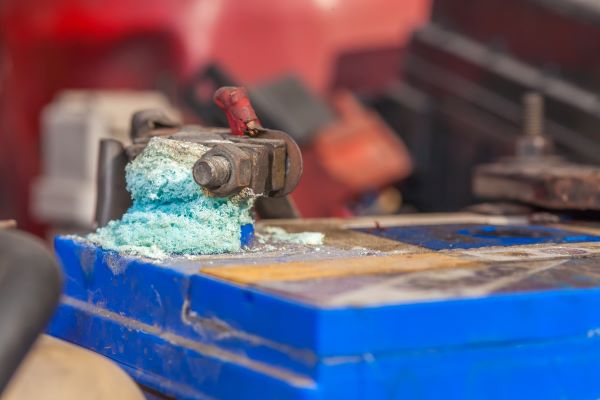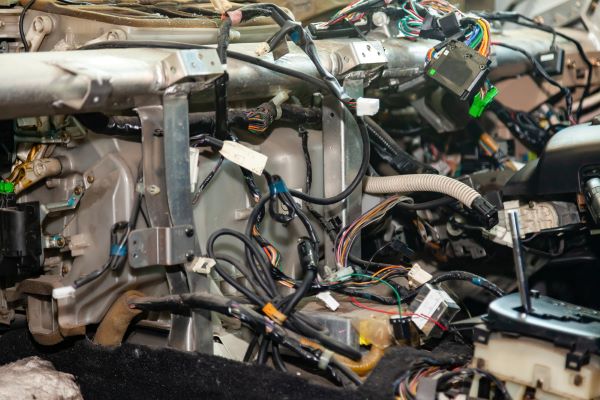Nobody looks forward to dealing with a dead car battery, but it’s even worse if you swap out the dead battery for a new one, only to have the same problem. In many cases, this would indicate trouble with the alternator, but what if the alternator is in good health? We review the reasons why the car battery keeps dying but the alternator is good.

In this guide, we discuss some reasons you will face a dead car battery even when the alternator is working correctly. We also look at how to find a short in a car and diagnose other charging system issues. In the end, you won’t have to deal with a battery that keeps dying, allowing you to enjoy quick starts once again.
Table of Contents
Car Battery Keeps Dying: Top Reasons Explained
If the car battery is dead, there are some simple explanations you could consider. Here are some of the top reasons that the car battery died even though the alternator is working.
Car Battery Dead
The simplest explanation is that the battery is bad. If you have hooked the car battery up to your automotive battery charger and it continues to die, it might have reached the end of its life. While many batteries can last up to five years, extreme climates and excessive wear can shorten their lifespan.
While replacing the car battery would solve your problem, you could also consider trying to recondition the battery. All you will need is some distilled water and Epsom salts.
Corroded or Loose Battery Connections
If the battery keeps dying, it’s likely that it isn’t getting charged by the alternator. If the alternator is in good working condition, then the problem could be with one of the connections instead. A loose or corroded connection creates resistance, keeping the battery from getting a full charge.

If you notice a white fluff on the terminals or cable ends, you are dealing with corrosion. Thankfully, some simple sandpaper, white vinegar, baking soda and wire cleaners can fix the issue.
Trouble with the Ground Connection
Sometimes, when you are thinking, “my car battery died,” it turns out that isn’t the case at all. A poor ground connection can make you think the battery is dead when it isn’t.
The ground connection is responsible for completing the link between the battery and the starter motor. If this connection isn’t good, you will have trouble starting the vehicle, with symptoms resembling a dead car battery.
Parasitic Battery Drain
If the battery keeps dying even though your charging system is working, you might be looking at a parasitic drain. A parasitic drain is caused by anything that runs off the battery when the ignition is turned off.
In many cases, this drain to the battery is caused by a short circuit. Left unfixed, the short circuit continues to drain the battery while the car isn’t running. When you come back to hit the road, the vehicle won’t start. You may have a problem with an interior light that won’t shut off, such as one in the trunk or glove box.
There could also be an electrical fault in the ignition circuit. With this condition, the radio might remain on.
Drained Battery
If your vehicle has been in storage or you don’t drive often, the battery can wear down from not being recharged. The battery doesn’t stay charged when the vehicle is off. Over time, the charge slowly dwindles away.
Additionally, if you are only taking the car down the street once a week, the alternator can’t do its job. Starting the car engine reduces the charge significantly and time is needed to restore this power. After several of these trips, the battery might be completely dead.
To prevent this drainage:
- Use a battery maintainer when your vehicle is parked.
- Drive longer distances to charge the battery. A minimum of 20 minutes on the highway should solve the problem.
Wiring Fault
When there is a wiring problem, it can often be more challenging to find and repair. However, there are some telltale signs that something is wrong with the wiring.

- Outer wiring sleeve damage. This insulation is needed to keep wires from touching metal and to protect them from corrosion.
- Plug or terminal corrosion.
- Bent wires that have created internal damage.
Consider checking the following cables if you think there is a wiring issue.
- Wire leading from the battery into the fuse panel
- Cables connecting the ignition switch to the battery
- Connection from the alternator to the battery
Why Does My Car Battery Keep Dying: Diagnosing the Problem
If you are banging your head against the wall, asking yourself, “why does my car battery keep dying,” we would consider going through this troubleshooting guide to get the answers.
Step #1: Examine Lights & Accessories
The car battery will die if lights and other accessories are left on. If the car battery is already weak, it won’t be able to handle this load for long. If your car battery keeps dying, investigate the situation at night when lights are easier to see.
However, don’t look into it right after shutting off the car. A lot of modern vehicles leave lights on for a few minutes after the ignition is shut off. For the best results, come back in 30 minutes when it is dark.
Step #2: Test the Car Battery
If there is nothing obvious draining the battery, you want to test it to see what health it is in. Charge the battery and test it with a voltmeter. You could also use a load tester to see how the battery responds to use.
This automotive tool will put the battery under a load that resembles that of your starter motor. It will indicate whether the battery is failing you or not. If you don’t have a load tester, many local auto parts stores will test the battery for you.
Here’s a video explanation showing how to use the voltmeter.
Step #3: Check Electrolyte Levels
If the battery is having a hard time maintaining a charge, it could be due to the electrolyte levels. If you have a lead-acid battery, you can look into each cell to see the electrolyte. This solution should cover the lead plates.
If not, you need to top off the battery with some distilled water. Just remember to wear protective gear because battery acid is dangerous.
Here’s a video explanation showing you what to do.
Step #4: Check Battery Connections
Look for corrosion on the battery connectors, cables and terminals. It is often green, white or blue and looks fluffy. If there is any corrosion, it could be interfering with the battery’s ability to charge.
To clean off the corrosion, you want to follow these instructions:
- Mix baking soda and water.
- Apply the solution to the corroded area.
- Gently wipe away the corrosion with a wire brush.
- Wash down the surface with clean water.
You should also inspect the connections for security. All of the connections should be tight. If you notice any that are loose, you want to tighten them up. You can trace the power and ground battery cables from the frame to the starter and to the fuse box to ensure everything is intact.
Step #5: Hunt Down a Parasitic Drain
If the car battery keeps dying and your other efforts haven’t revealed anything, it’s possible you are dealing with a parasitic drain. Sadly, these aren’t always easy to find.
To start, use your multimeter to check the current flow when the battery cable is disconnected. Set it as high as possible or you could blow a fuse in the meter.
A test light will work too, but it isn’t as precise. Still, you will use it the same way, looking for current flow with the battery cable disconnected.
The most common parasitic drains tend to be the light in the glove compartment or trunk. However, any interior light or accessory can drain the battery overnight.
This diagnostic step requires you to use the process of elimination. You will have to use your multimeter as you remove individual fuses until there is no drain. Once you know which fuse is running the electrical current, you will be able to discern where it is coming from.
Why Does My Car Battery Keep Dying While Driving?
If the car battery died while driving (link to future article), the problem probably isn’t your battery at all. Your car battery gives power to the starter motor when you are ready to get moving. Once the motor is running, the battery isn’t running everything anymore. Instead, the charging system has taken over control.

If the car battery keeps dying while you are driving, you are looking at an issue with the charging system itself, possibly even the alternator. There’s a chance that the alternator belt is just loose. If this is the case, you might be able to tighten it and resolve the problem. It could also be a problem with the tensioner, especially if the belt has stretched over time.
Automotive Battery Care for a Longer Life
It’s not difficult to keep your car battery running longer. With some simple maintenance and care, you can extend the life of your car battery. Here are a few tips to keep in mind.
Refrain From Taking Short Drives
Taking a short car ride keeps your battery from getting a full charge. To ensure maximum battery power, it’s critical to drive for longer periods at highway speeds. If you aren’t going to drive often, you should have the battery hooked up to a maintainer in between.
Secure the Battery
If the battery isn’t secured in its compartment, it will deal with more vibration than it should. This shaking can turn into internal damage and create short circuits. If you drive down bumpy roads, it’s more important than ever to have a secure mounting bracket.
Make Sure the Lights are Off
Leaving any lights or accessories run after you exit the vehicle is just a recipe for disaster. If this is something you struggle with, leave yourself a note on the dashboard or park in a direction that forces you to walk past the headlights on your way into the house.
Remove Battery Corrosion
Over time, the battery terminals will end up with some corrosion on them. If you want to extend the life of your battery and improve the connection, you must remove the corrosion. Some simple baking soda and water tend to do the trick. Just be sure you wear protective gloves and clothing to avoid getting any acid on you.
Test the Battery
It helps to know the state of your battery, which is why we recommend testing it often. With a battery tester, you can ensure the battery has an optimal charge and is always ready to go. Once the voltage levels start to drop, you know it’s time to replace the battery before it leaves you stranded.
Avoid Using Electronics While Idling
If you are waiting for someone while parked, it is tempting to run the air conditioner and radio. However, this practice puts more wear on the battery and wears down the charge. Additionally, idling tends to wear down the battery in general.
Conclusion
Why does my car battery keep dying? In many cases, you will be able to spot the problem with ease. Just go through our troubleshooting guide to find the cause and fix it promptly before you end up late for work again.
